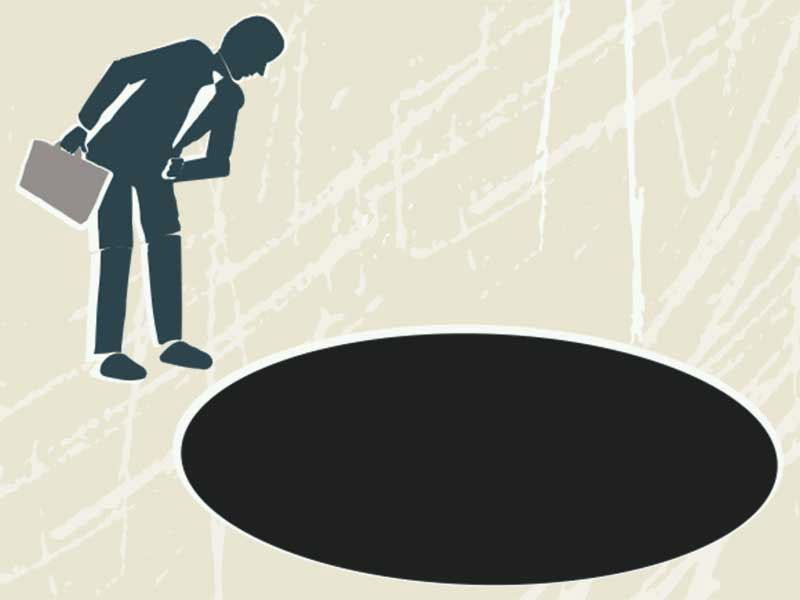
Interest rates have nowhere to go but up.
“The market is pricing in no fewer than six rate hikes by the BoC in 2022, starting perhaps in March, [with] more to come out to 2023,” said Benjamin Tal, deputy chief economist with CIBC. That means prices of existing fixed income assets are sure to tumble. This creates tough conditions for clients who have used bonds to offset equities risk.
Inflation also is high. At the end of October, year-over-year inflation rates hit 6.2% in the U.S. and 4.7% in Canada, far above the meagre yields on 10-year bonds (1.4% in the U.S. and 1.5% in Canada on Dec. 2).
These factors are reflected in bond prices, with government bonds leading the string of losses. The iShares Core Canadian Universe Bond Index ETF dropped by 4.47% for the year to Nov. 30, and the iShares Core Canadian Corporate Bond Index ETF dropped by 3.41% for the same period. Meanwhile, the iShares Core Canadian Short Term Bond Index ETF had a relatively mild loss of 1.49%.
When viewed as investments, bonds are losers. But when viewed as portfolio insurance, losses become the price of mitigating risk.
For example, speculative stock gains can vanish just before a client retires. Bonds, the normal buffer, pay a pittance. So investors have moved up the risk curve and are saving more in riskier fixed-income vehicles for retirement, said Chris Kresic, head of fixed income and asset allocation with Jarislowsky Fraser Ltd. in Toronto. “We see, in fixed-income allocations, some of our clients choosing shorter durations with less interest rate risk.”
Alternatives to plain-vanilla bonds, which are largely in negative yield territory, include rate-reset preferreds. These securities offer returns ranging from 3.5% to 5.5%. But preferreds are equities subordinate to bonds, and if they’re not called, you could be stuck with them, Kresic explained. Unlike bonds with known maturity dates, rate-resetters do not necessarily convert to cash.
Another alternative is inflation-linked bonds. But Canada real-return bonds are all long issues, and owning them means taking on a lot of duration risk. U.S. Treasury inflation-protected securities come in shorter issues, but buying them means added currency risk, Kresic said. A bond buyer who wants safety should stick to conventional bonds, he said.
Clients who can accept bonds with more risk could consider convertibles and foreign issues. Convertible bonds offer a stipulated return, like all bonds, but with an equities enhancement. Their equity-conversion feature adds to their potential return — and to their volatility, because the convertible’s price is based on the conversion option. Other choices include global bonds paying in U.S. dollars or euros, but those come with currency risk.
Patient clients could see bond prices recover. Inflation may subside and supply bottlenecks may ease. And the market itself may restrain rate rises.
Canadians accumulated a record $300 billion in savings during the pandemic, implying there is no rush to borrow. According to Sri Thanabalasingam, senior economist with Toronto-Dominion Bank, consumers may be slow to spend those savings, with much of it going to debt reduction. That could cause the cost of loans to drop.
Moreover, the Bank of Canada may not hike at the rate the market expects, said Romas Budd, vice-president and senior bond portfolio manager with 1832 Asset Management LP in Toronto. The market’s inflation expectations are much too high, he said.
“As we get through next year, a lot of the more extreme price pressures due to supply chain interruptions will correct,” Budd said. “If supply chains shorten, then commodities would have less panic pricing and prices should come down. That means less inflation [and] less reason for the BoC to raise [rates]. The market has predicted more hikes and higher rates than what will be happening.”
For now, a client suited to a balanced portfolio should stick with their plan. “Just because interest rates are influenced by a temporary bottleneck situation is no reason to change an allocation,” Kresic said. “If you take out bonds, you don’t have a lot of downside protection. Future rate rises are already priced into bonds and the market.”
Sometimes, being patient and refusing to chase trends can pay off.